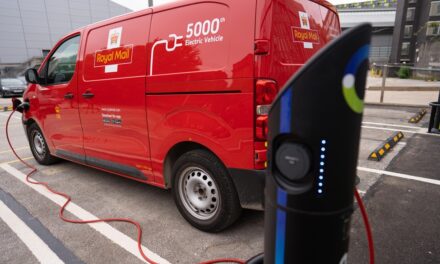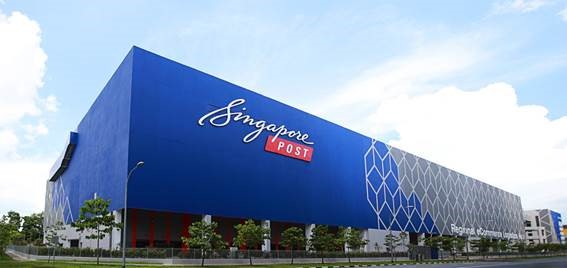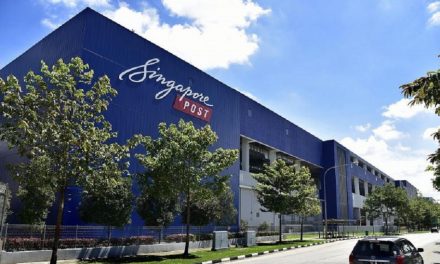
Changing Singapore’s postal landscape
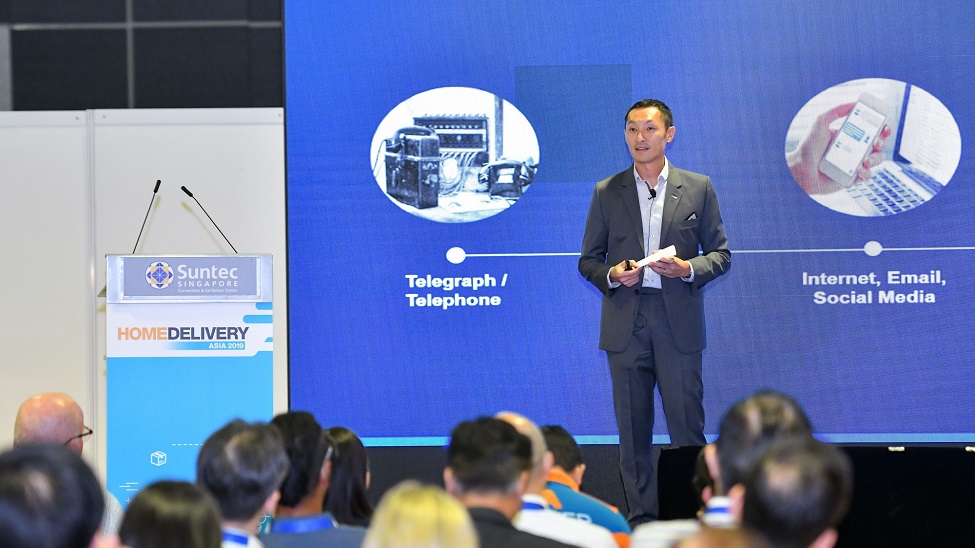
This article is an extract from the Summer Edition of MER Magazine published in February 2020. You can read the full article as well as other articles from MER for free by becoming a member of Post & Parcel today.
 Picture Singapore and you are likely to think of the famous skyline with its plethora of high rise buildings. For postal operators the urbanised nature of the country presents a unique challenge as delivery routes often cover a small geographical area due to the density of the buildings, but the loads are heavier.
Picture Singapore and you are likely to think of the famous skyline with its plethora of high rise buildings. For postal operators the urbanised nature of the country presents a unique challenge as delivery routes often cover a small geographical area due to the density of the buildings, but the loads are heavier.
MER speaks to Vincent Phang who joined SingPost in April 2019 as CEO for Postal Services and Singapore, about how the company is re-engineering its postal infrastructure and investing in new technology to help meet its customer’s needs.
What drew you to SingPost?
I have been in the logistics industry for over two decades now, working in various companies and capacities. I’ve enjoyed every one of my stints immensely, but found that the most fulfilling jobs were the ones where I was able to create value in logistics for Singapore. When the opportunity to join SingPost came up, I was attracted to it as postal services worldwide are a critical national infrastructure responsible not just for delivering mail and packages, but also crisis communications, disaster relief and even social welfare. The opportunity to enhance a key national service that reaches every home and office in Singapore every day, coupled with the chance to work in a household name consistently placed at the top of regional as well as worldwide postal agencies every year, made it impossible for me to say no.
What challenges are you faced with?
At SingPost, we process 3 million mail items on a daily basis. Ensuring that mail is delivered accurately and punctually to every corner of a dense, high-rise urban cityscape every day is the largest and most complex logistics endeavour in Singapore by far. This proposition is made more challenging given our postman-to-resident ratio of 0.3 postmen for every 1,000 residents, when the global average is around 1-2 postmen per 1,000 residents. This is compounded by the evolution of the postal landscape here in Singapore. As letter mail continues to decline, we see an increase in parcel delivery as e-commerce thrives in this part of the world, resulting in a much-needed re-think of our postal infrastructure in the country.
We also have a well-established courier service that is facing competition from start-ups that are aggressively muscling into the last-mile space. However, we have made significant strides in the last-mile space over the past year, with changes made to fundamental postal workflows and processes, investments into and adoption of new technology, as well as campaigns rolled out within the company as well as nationwide emphasising the importance of every delivery and public feedback respectively. A good indicator of the efficacy of our enhancements is the 2019 year-end peak season, where we achieved record delivery volumes and experienced a significant reduction in failed deliveries as well as customer complaints.
What challenges are unique to Singapore?
As a small island nation with a developed economy, Singapore’ cityscape is dense and filled with high-rise commercial as well as residential blocks. 80% of Singapore’s residents stay in high rise public housing apartments, with another 16% living in condominiums or similar apartments. Coupled with the prevalence of high-rise commercial buildings throughout Singapore, deliveries to such buildings form the bulk of our postman beats, and these come with their own unique set of pros and cons. For example, delivery beats usually cover a limited geographical area due to the density of the buildings, but the loads are heavier. Another challenge is the low postman-to-resident ratio as mentioned previously, which is a product of Singapore’s first-world economy. For both challenges, we are actively exploring and adopting technology to not just upskill our postmen, but also to upgrade our postal infrastructure in preparation for a tech-fuelled future of post.
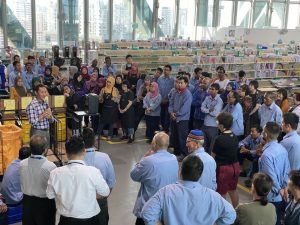 What changes have you spearheaded so far?
What changes have you spearheaded so far?
My team and I have implemented a series of fundamental enhancements to postal operations and processes, with a view to making every delivery count. From shunting bulky postal deliveries to our courier service and ceasing doorstep deliveries for small parcels, to dynamically regulating our capacity which calibrates daily mail volumes to delivery bases so that postmen are not overwhelmed with work during the peak season, these enhancements have reduced our delivery failure rates and made the postmen more productive, effective and most importantly, happier.
We have started an internal service campaign called “Every Delivery Counts”, which calls on our entire business to align to the customer experience we aim to provide. This is a far-reaching initiative that we are driving deep and wide within our organisation. Ultimately we exist to deliver, and we see ourselves as the country’s service provider for all deliveries.
We are also proactively looking at the future of post, as we experience the start of an e-commerce boom in Singapore, as well as the wider Southeast Asia and Asia Pacific region. We put together teams to explore how we can continue to maintain high delivery standards as e-commerce deliveries rise, and have come up with prototypes for a “smart letterbox” as well as “smart stamp” as part of postal ecosystem of the future. The “smart letterbox” will likely undergo public trials in the next few months, and we look forward to showing residents what the next generation of letterboxes are capable of.
Can you tell me about the smart letterbox?
The “smart letterbox” will offer residents unparalleled convenience and security for their mail. Residents will no longer need a letterbox key as the “smart letterbox” is able to authenticate individuals’ identities before dispensing their mail to them. SingPost is exploring various authentication options such as mobile app verification, facial recognition and fingerprint recognition technology, with an emphasis on security as well as user friendliness. The “smart letterbox” will also cater to e-commerce item deliveries via post, with customisable mail storage receptacles.
Recipients will be notified whenever they receive mail which in turn allows them to collect mail more efficiently through eliminating the need to blind-check their letterboxes on a regular basis. We believe every delivery is important, whether it is a letter or a parcel, and we will do what is right to make every delivery count. Fundamentally we believe in the re-engineering of our postal infrastructure given Singapore’s unique urban landscape and challenges to make this happen.
How will smart mail cut down on lost and misdelivered mail, and improve delivery efficiency?
Currently, sorting machines at our mail processing facility are able to sort mail to the individual blocks of the recipients. Postmen will then have to manually sort the letters to the specific floors and unit numbers of the recipients, before going on their delivery rounds. As part of the future of post ecosystem, we are looking at having either the “smart letterboxes” or sorting machines at our mail processing facility fine-sort mail right down to the unit-number level, so postmen can focus solely on delivery. By fully automating the mail sorting process, human error is eliminated and postman efficiency is increased.
Also, under the future of post ecosystem, one of our objectives is to make even basic mail trackable by tagging each letter with a unique data matrix code. This enables letters to be tracked as they pass through our delivery network, all the way till they are deposited in the “smart letterboxes”, whereupon a mobile alert will be sent to recipients notifying them that their mail has arrived. With this tracking capability, instances of lost and misdelivered mail should be significantly reduced.
Where did the idea for smart mail come from?
Singapore, and in fact the Southeast Asia and Asia Pacific region, is on the cusp of an e-commerce boom. Numerous studies, including one by Google together with Temasek Holdings and Bain & Company, have forecast a tripling in the value of Southeast Asia’s Internet economy from US$100 billion in 2019 to US$300 billion by 2025, after the sector had more than tripled its value over the past four years. One of the primary factors turbocharging this surge is the e-commerce sector, which jumped almost sevenfold from US$5.5 billion to over US$38 billion in the last four years.
For SingPost, we have also seen a congruent uptick in the volumes of e-commerce items over the past few years, especially during the year-end online sales events. As our postmen grappled with increasing numbers of packages and doorstep deliveries year after year, and given the bullish forecasts for e-commerce in the near future, it became apparent that a solution had to be found sooner rather than later. Given the unique challenges detailed in question 3, it was clear that we had to harness technology to re-engineer our postal ecosystem to become a “smart” one.
How close is SingPost to realising this vision?
As our vision of the future of post will require the involvement of multiple parties including various government ministries and agencies, we will need to work in close consultation with them to realise this. That said, we are likely to begin a public trial of our “smart letterbox” in the coming months, and the results of this trial will better inform us on the timeline.
Do you foresee physical stamps and traditional mail boxes being phased out completely in the future?
Our iteration of “smart stamps” are physical stamps with a data matrix printed on it, so stamp collectors need not fret! As for letterboxes, we envisage the “smart letterbox” replacing traditional letterboxes, due to the various advantages it presents for residents and municipal authorities. However, this is still subject to the performance of the “smart letterbox” during the public trial.
What does 2020 hold for SingPost?
We have just concluded a very successful peak season, and are full steam ahead on our future of post vision. 2020 is set to be a very exciting year for us as we roll out a slate of new initiatives including the “smart letterbox”, which residents will be able to get a sneak peek at in the coming months.
What problems would smart mail solve?
The future of post ecosystem places Singapore in a strong position to capitalise on the impending e-commerce boom as it powers the nation to become the global leader in cutting edge urban logistics, enabling SingPost to be the country’s delivery service provider for all things, including mail.
With trackable mail and “smart letterboxes”, Singapore’s postal landscape will change dramatically. For the first time in history, every single mail item will be able to be tracked. Mail sorting will be faster, more accurate, and will no longer require hours of the postman’s time. With mail receipt notifications, residents no longer have to blind-check their letterboxes for mail, and can look forward to a more streamlined and secure mail collection experience with autonomous authentication and dispensing of letters and packages.
Using technology to enhance and streamline postal operations will also create positive knock-on effects for Singapore as a whole. They include reducing traffic and carbon emissions due to faster and more efficient deliveries, spurring consumer spending as e-commerce becomes more convenient than ever, creation of a community/municipal delivery service that can send groceries, consumables and even emergency and medical supplies to residents’ homes.
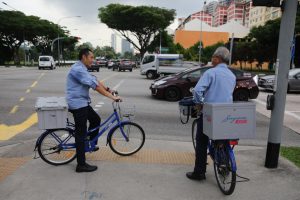 What would surprise people about your role?
What would surprise people about your role?
As the CEO of Postal Services in Singapore, I am also the Postmaster General and this is not just a title! I have on numerous occasions partnered with different postmen to personally experience the challenges and intricacies of delivering mail across Singapore. The insights gleaned have been very useful in informing me of the postal needs of Singapore. My kids are always very excited to tell their friends their Dad is a Postman.
About Vincent Phang
Mr Phang joined SingPost in April 2019 as CEO for Postal Services and Singapore, which encompasses all of SingPost’s core business in Singapore, including Post, Parcel and Logistics. In this role, Mr Phang is responsible for leading the delivery network in Singapore, through a comprehensive and customer-centric suite of logistics, mail and parcel solutions for our customers. He is also responsible for SingPost’s international postal relationships.
Mr Phang has over 20 years of experience in both military/government and private sector, leading regional supply chain management, healthcare, logistics, industrial and manufacturing. He has served in various senior leadership roles in MNCs, including Group CEO of ST Logistics. Mr Phang holds a Master in Engineering (First Class) in Aeronautical Engineering from the Imperial College, UK and has also attended the Advanced Management Program in Harvard Business School in 2014.
This article is an extract from the Summer Edition of MER Magazine published in February 2020. You can read the full article as well as other articles from MER for free by becoming a member of Post & Parcel today.


